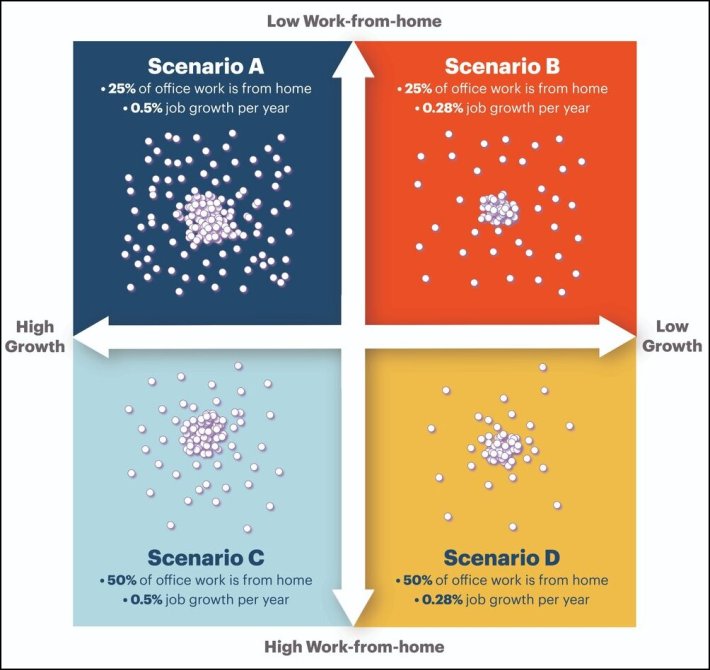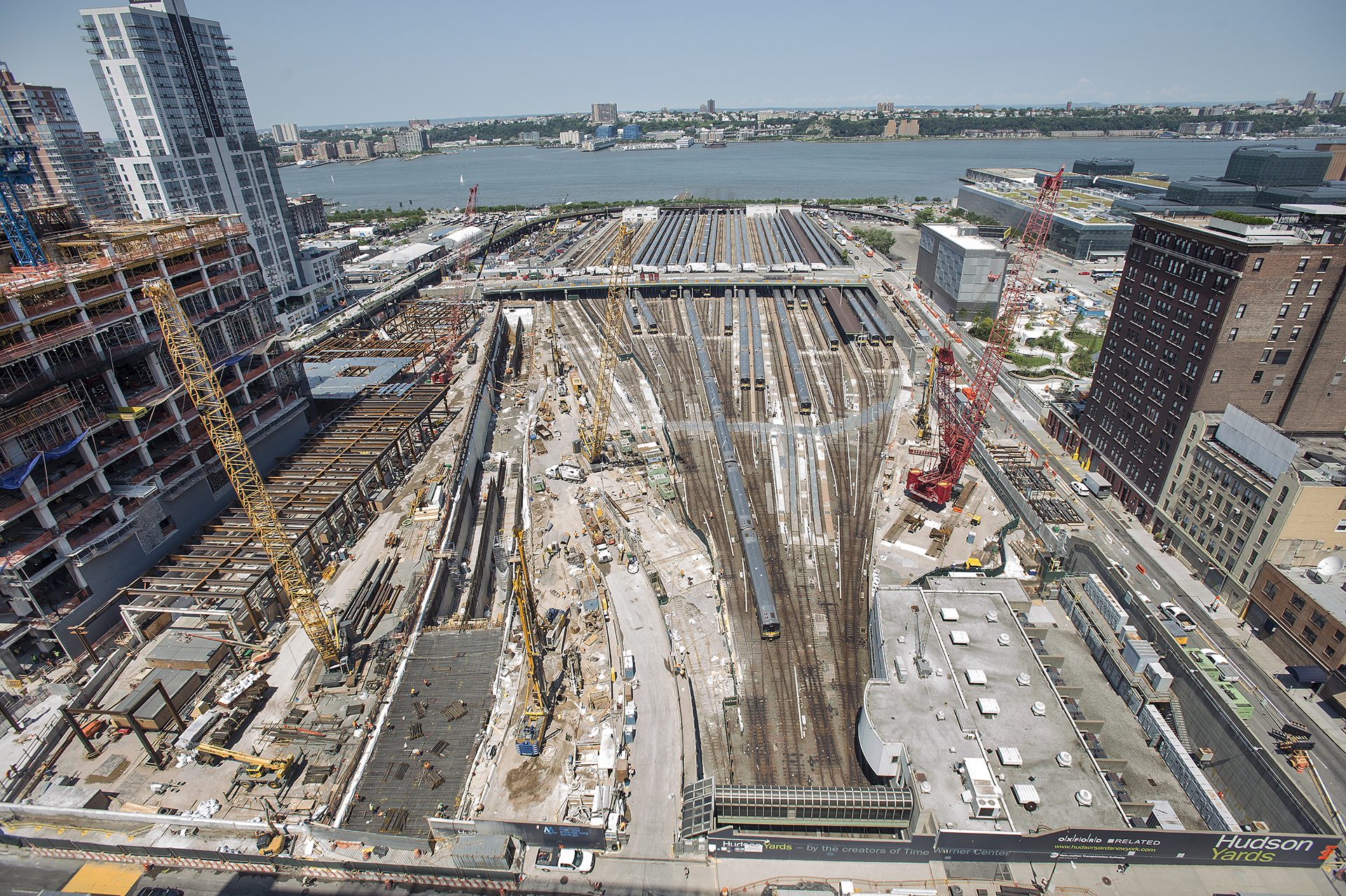Riders will get back on their cross-Hudson trains sooner or later — so New York and New Jersey need to be ready.
A new report from the Regional Plan Association laid out four scenarios for the future (if there is one) — and the prognosis is that more transit is needed.
No matter what the variables between now and 2070 — high job and population growth with low work from home trends, low job and population growth plus low work from home trends, high job and population growth combined high work from home trends and low population and job growth and high work from home trends — transit ridership in the cross-Hudson tunnels between New York and New Jersey will wind up outdoing the ridership figures from before the pandemic.
In every scenario but one, the number of cross-Hudson commuters rises above the pre-pandemic number of commuters by the year 2050. In the fourth possible future, the dreaded Scenario D, a combination of high work from home practices and low job growth would mean that cross-Hudson commuting patterns wouldn't rise above their old numbers until 2070 (see chart).

But even if commuting patterns drag, the RPA's dark futurist magic predicted that even under the dreaded Scenario D, total cross-Hudson transit trips, which hit 465,763 per day on average in 2019, would rise above pre-pandemic levels by 2050 because, as seen in the return of pre-pandemic traffic on the MTA's bridges and tunnels, car infrastructure in the region can only support so many more trips before becoming completely unusable gridlocked hellpoints.
Under the conditions of Scenario A, which work under the assumptions New York continues its rocket to the moon before the pandemic, the report predicts that the average daily number of cross-Hudson trips will hit 703,435 by 2070, while Scenario D's more pessimistic scenario predicts 549,337 daily trips on average.
And even as the MTA has to rework its ridership and financial projections in the face of a slower-than-expected return to the office causing a slower-than-expected return to the office, one of the report's authors noted that non-work trips are also buoying the attempt at a subway ridership bounce back.
"You might not get as much increase in work trips, but there are a lot more non-work trips on the subways and buses, and what you're seeing is that a lot of those trips are coming back," said Regional Plan Association Senior Research Fellow Chris Jones. "So the subways and buses bus ridership is really about the same as some of the commuter ridership at the moment."
Religious adherents of the return-to-office movement can also point to other green shoots in their argument that people will eventually be doing the commuter rail thing at something close or even above pre-pandemic levels. This week, office occupancy hit 40 percent of pre-pandemic levels. Additionally, on Tuesday, ridership on the Long Island Rail Road and Metro-North each hit pandemic-era weekday ridership records, with the LIRR and Metro-North carrying 66 and 67 percent of their pre-pandemic riders, respectively.
In the two futures where office workers come back to the office more often, the RPA report said that the amount of time office workers spend working from home by 2030 would rise from 12 percent to 25 percent of their time. This would be a scenario where "many large corporations, particularly in finance and real estate, return to a five-day work week, while most professional, service, and non-profit employers go to a hybrid structure" per the report.
In the other direction, a high work from home future by 2030 could mean that office workers are spending as much as 50 percent of their work hours working from home, and could even double the time workers in industries like construction and manufacturing spent working from home.
Given what the report said was an inevitable increase in trips across the Hudson River for any reason at all though, its backers also argued that the Gateway Project and its proposal to double track capacity under the Hudson is the right move to help transit compete with Big Auto.
"This project is about fixing the antiquated, outdated tracks that move people and that move trains," said Tri-State Transportation Campaign Director of Regional Infrastructure Projects Felicia Park-Rogers. "It's about mass transit working for riders so that people can get from one place to another, to be at home, school, work, entertainment, family, airports and health care. They need to be able to do it in a way that is reliable, safe, efficient, and comfortable, and in a way that competes with cars and renders cars pointless."
New York and New Jersey still need to complete a series of steps before getting their hands on the federal share of money for Gateway that will help pay for the massive tunneling project between the two states, including completing a memorandum of understanding that will lay out who pays what for the project share. And with the Democratic Party poised to bungle away the House and Senate in November, project backers said they hoped that the projections would help spur movement towards an agreement from both states.
"We do worry that if we find ourselves next year in a situation where the delegation from this region does not have the kind of seniority and influence that it currently has, things could get more complicated," said RPA President and CEO Tom Wright. "What we'd rather do is just get all this done, get the get the Washington piece of it done as quickly as possible so that we can put people to work actually build this thing."






